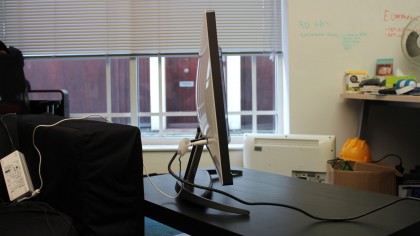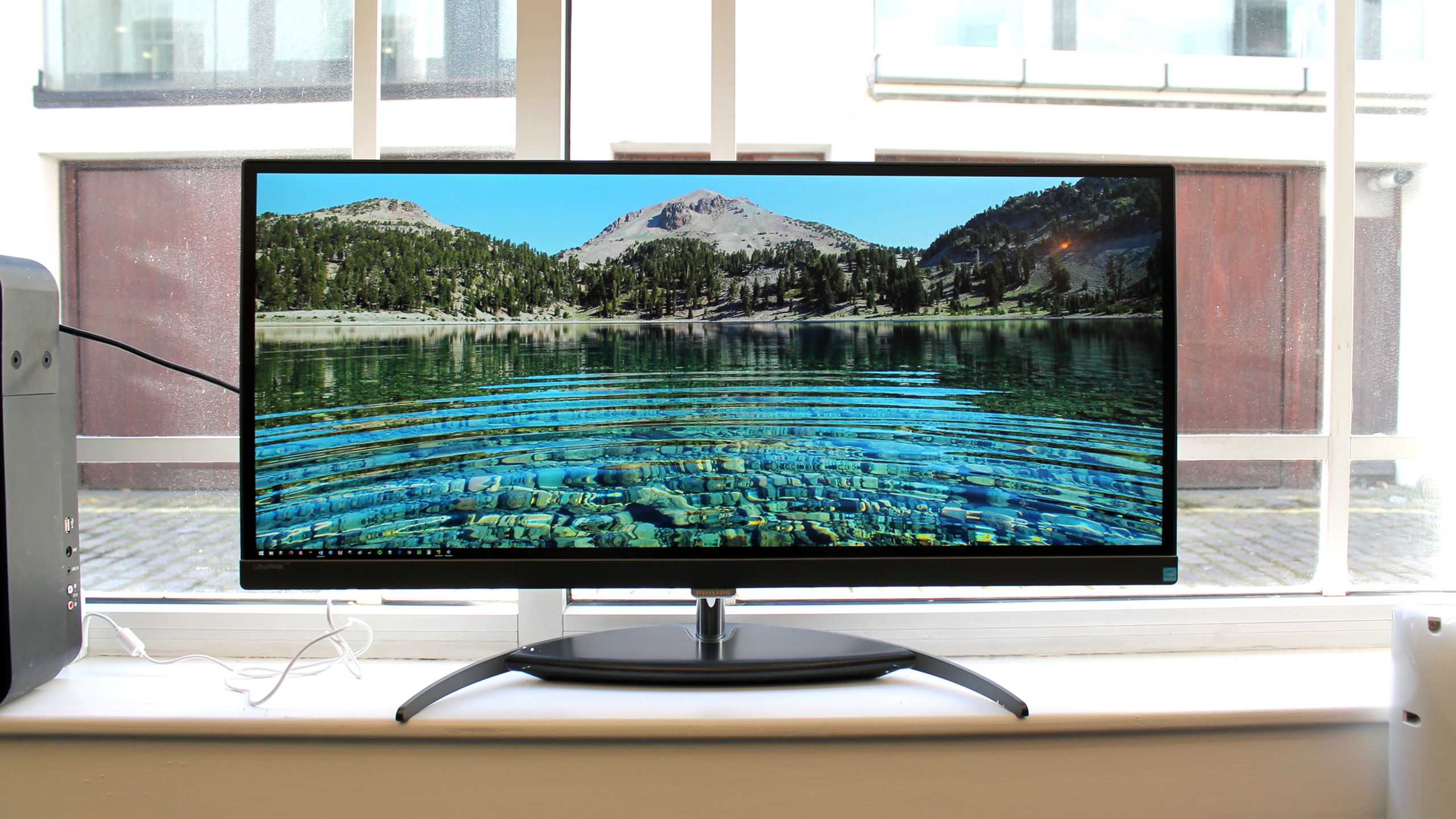TechRadar Verdict
A bright IPS screen goes a long way with any monitor, and having an extra-wide 21:9 curved form factor makes the Philips Brilliance BDM3490UC a real visual treat when playing games or watching movies. Plus it's reasonable value for money too.
Pros
- +
Superb build quality
- +
Great picture
- +
Relatively good value compared with rivals
Cons
- -
No headline 75-100Hz refresh rate
- -
No G-Sync or FreeSync
- -
Inflexible stand
Why you can trust TechRadar
Curved, ultra-wide monitors with a 21:9 aspect ratio have only become available recently, providing some interesting competition for 16:9 displays that have been standard for at least a decade. While 4K is the loudest buzzword in the industry, this new display format is a genuine alternative, and so far is proving very popular for gaming and movie watching.
Philips is the latest manufacturer to enter this market with the Brilliance BDM3490UC, a 34-inch 21:9 monitor with an IPS (in-plane switching) panel and a screen resolution of 3,440 x 1,440. As with some (but not all) similar 21:9 displays, it has curved edges, bringing the furthest parts of the screen into your peripheral vision.

Aside from the screen technology, the BDM3490UC is a premium monitor in every way, with superb build quality, a very attractive design and great sounding speakers too. But at £670 (around $960, AU$1,350) it's quite expensive. On average, 21:9 ultra-wide displays can cost more than 4K screens do now, given how the latter technology has fallen in price considerably over the last 12 months.
Another 34-inch curved monitor, the Dell UltraSharp U3415W, still costs £699 ($980, AUS$1,370) when bought direct from Dell - and that's almost one year after it initially launched. You can pick it up for £50 ($80/AUS$130) cheaper through online retailers. Dell's model offers brilliant picture quality but is a good deal chunkier (and heavier) than the Philips Brilliance BDM3490UC.
Design
The first thing you'll notice when you take the Brilliance BDM3490UC out of its box is how utterly huge it is. A 34-inch ultra-wide monitor takes up a lot of space, and these dimensions will dominate most desks.
The aforementioned 3,440 x 1,440 pixel-resolution is like a wider version of a standard 27-inch 1440p monitor, adding 3.5-inches and 440 pixels to each side. The effect is similar to having dual displays, albeit with no annoying bezel in the middle.

The front of the monitor is black, with a slightly lighter grey tone at the lower section. At the rear it's white, covered in very glossy and reflective plastic, which looks really good.
Sign up for breaking news, reviews, opinion, top tech deals, and more.
It has a large stand to support the weight of the screen, which has been designed like a crescent moon. The support strut connecting it to the screen is made from solid metal. The screen's height cannot be adjusted, but it does tilt back and forth.
There are four display inputs at the rear, including a generous array of three HDMI ports, only one of which is HDMI 2.0, and there's a DisplayPort 1.2 connector as well. As with any 4K screen, those are the only two connectors that can drive the BDM3490UC at its full native resolution at 60Hz. If you connect a computer to either of the HDMI 1.4 ports, you'll be limited to 30Hz, which means very choppy mouse movement, unless you lower the resolution. Additionally there's a USB 3.0 hub with four ports.

Built-in audio is provided with two 7W speakers, which sound excellent compared with a lot of displays, and these support DTS as well. If you want external sound, a pair of 3.5mm input and output jacks are there too.
Lastly, there's a small 4-way joystick located right underneath the bezel to control the on-screen menus, and this makes it much easier to flip through the lists of options and settings than the more traditional method of using separate buttons to move up and down through menus, as seen on most displays.
